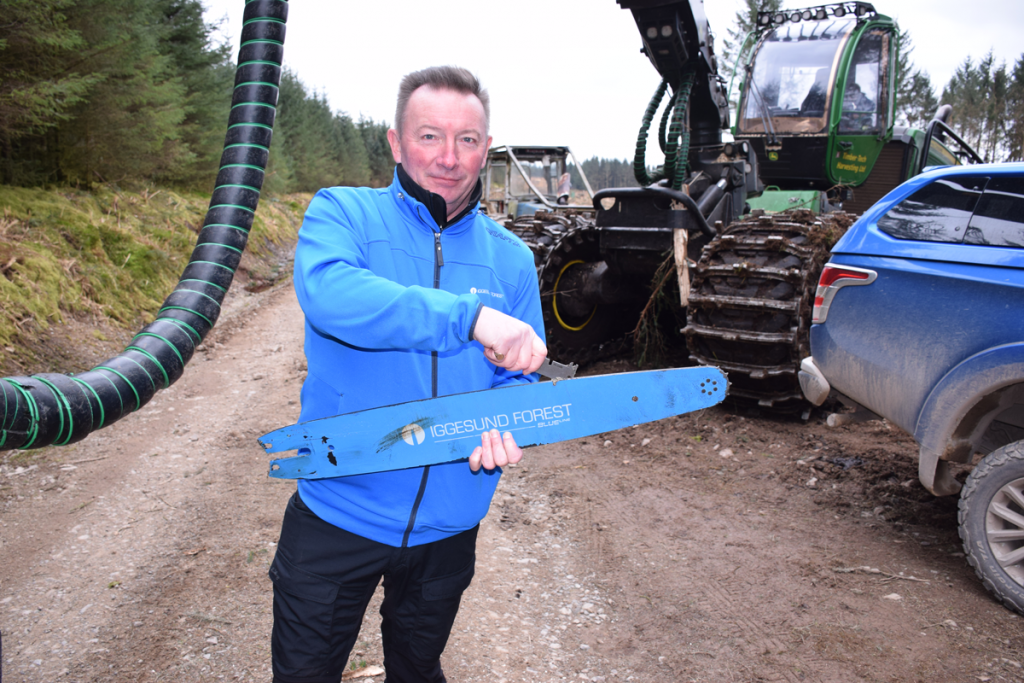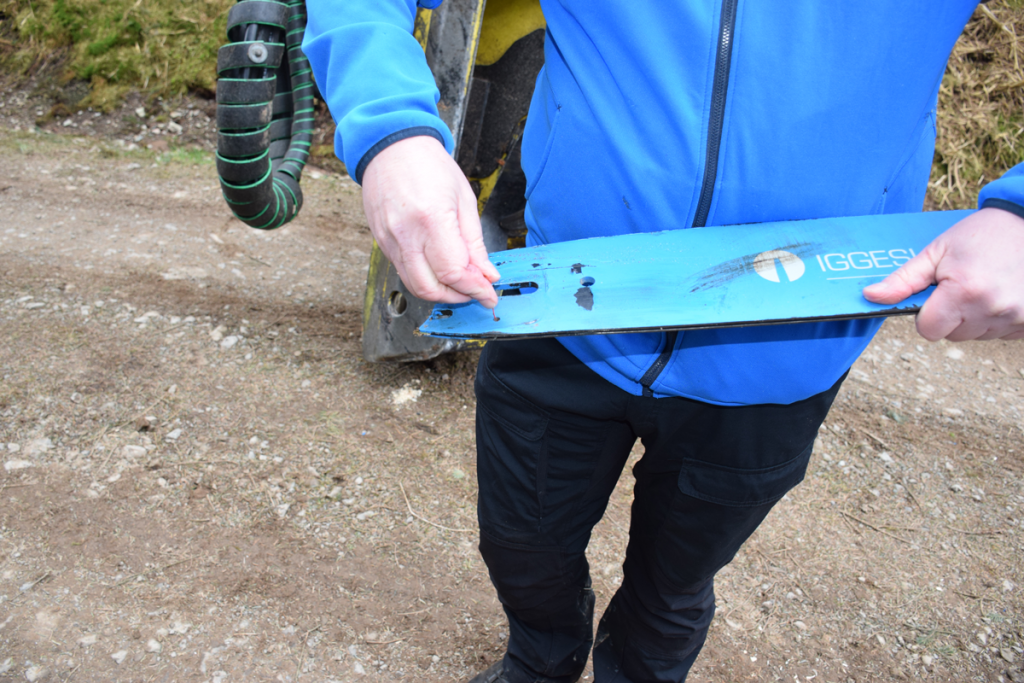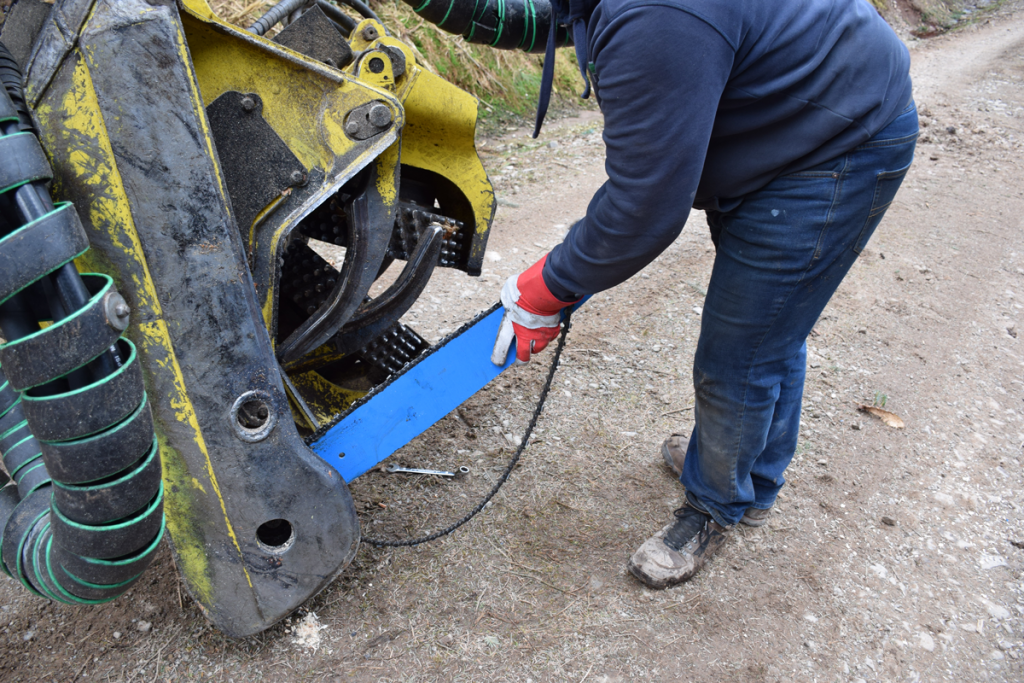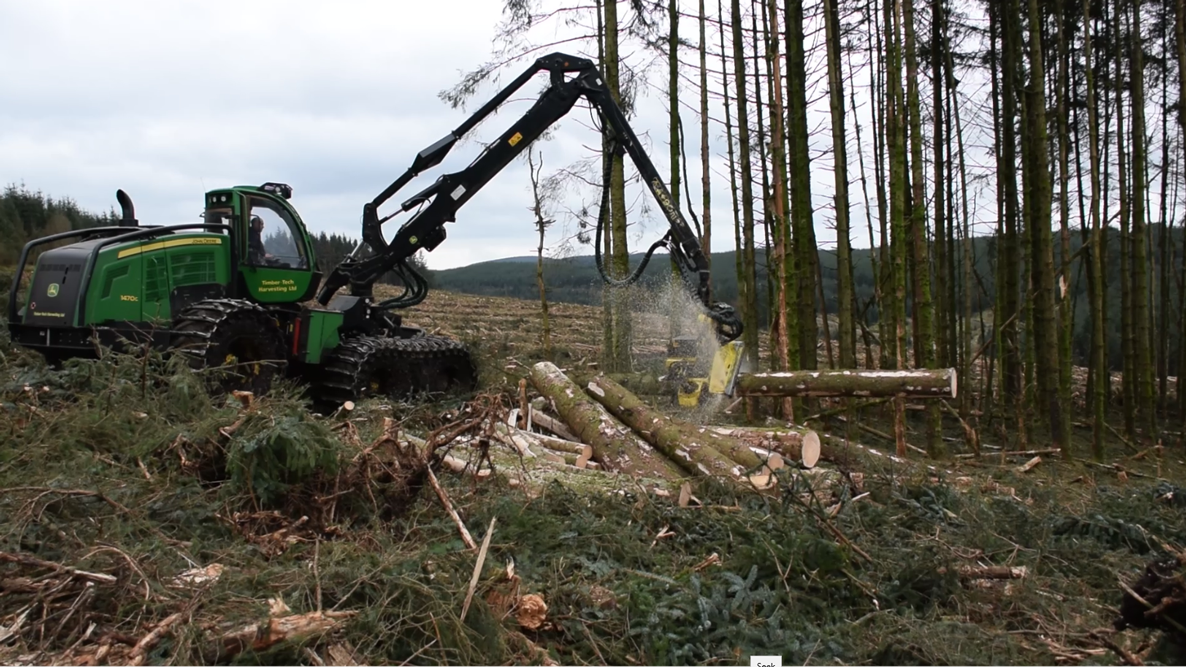It is not possible to eliminate chain shot, but there are simple steps that can be taken to reduce the risk.
Chain shot is the high velocity separation and ejection of a piece or pieces of cutting chain from the end of a broken chain.
When a saw chain breaks, it can scatter linkages into the surrounding area at high speeds. Most commonly the chain shot moves along the plane of the saw, which can cause a hazard to the operator when the saw is aligned with the cab or the body if using a chainsaw.
Chain shot whistling through the air has as much kinetic energy as a bullet fired from a rifle! You should stay at least 70m away from a working
harvester and only approach it once it has stopped working and the harvester operator has signalled you to approach.
Chain shot can happen on processing equipment or a manual saw. A chain breaks for a number of reasons including:
- Improper tension – chain too loose
- Improper chain maintenance or repair
(hammered rivets) - Damaged sprocket, bar and/or chain
- Improper bar and chain lubrication
- Defective chain
- Excessive chain speed – new chainsaws can drive chains faster than their design and harvesters can be adjusted to push chain to excessive limits.
Keep in mind that many chains fail at the instant they are damaged so chain shot cannot be totally avoided.
How chain shot happens
A chains cutting speed is normally 40m/sec, but on breaking can accelerate up to 309m/sec (1,112km/hr) almost the speed of sound. Higher chain speeds with attendant power input generally equates to faster cutting speeds but faster cutting speeds mean increased wear, shorter service life and increased chance of chain breakage and injury. Researchers estimate that a chain shot might occur in 1 in every 50 chain breaks.
Responsible chain, guide bar and sprocket manufacturers are taking the risk of chain shot very seriously and are doing their utmost to make sure that they are supplying products that are engineered to the highest standards while using the best materials that are available.
Forest machine manufacturers are looking at ways to reduce the risk of chain shot to operators by improving the strength of safety glass and
polycarbonate windows. Chainsaw clothing manufacturers are developing lighter and safer clothing with better protection.
Iain Lawrence, from Iggesund Forest, specialises in this field. FMM has worked with Iain on numerous occasions’ trialling the quality and performance of cutting products and looking at ways to improve
safety.
“I started out with Sandvik Windsor in 1992 until 2001 where I was employed as the UK Sales and Marketing manager. Training and development of the harvester sector was the prime objective of my role.”
“I joined Blount (Oregon) in 2001 and acted as European sales manager for the Windsor brand until 2006. This role involved incorporating the Sales and development of new business in Europe for the Windsor brand. As well as identifying new distribution and opportunities to develop the brand within Europe.”
“I continued with Blount (Oregon) in the sales and development of the Oregon Harvester range in Europe and South Africa until 2017. The most important part of my role at Oregon was the training of OEM’s, distributors, dealers and operators on how to maintain the cutting system. I encouraged safe working practice and regular maintenance to improve safety in the work place and improve fuel economy – one of the largest costs to operators.”
“From 2017 I have been with Iggesund Forest as their Export Sales manager: Continuing my training role and developing a training package for Iggesund Forest, again to promote safety in the workplace.”
Iain can’t reiterate enough the importance of regular checks and maintenance of the cutting equipment and here are his suggestions to help reduce the risks of chain shot.
General Maintenance
- Ensure correct chain tension at all times, clean behind and around saw chain tensioning unit to maintain correct function.
- Use good quality chain oil
- Check chain speed regularly, should be 40 m/s
All of the above good work practices will reduce the incidence of chain shot. Chain shot is potentially life threatening and should never be taken lightly. It can also result in expensive repairs to the machine.
The rule of thumb for replacing is 1-2-10; one guide bar to two sprockets to ten chains.
Other recommendations to increase operator’s safety:
- Always follow the manufacturer’s recommendations for maintenance.
- Never use a dull or blunt chain, replace it or sharpen it immediately as this greatly increases wear on the cutting equipment.
- Maintain the manufacturer’s recommended depth of the rakers throughout the life of the chain.
- In cold and freezing conditions use lighter chain oil if possible as this will increase the flow rate and operate the saw periodically without cutting (air cuts) as this will increase the amount of lubrication supplied to the cutting system.
- Do not operate a harvester with chain shot eliminator missing.
Using a badly worn chain on a new sprocket or a worn guide bar with a new chain will decrease the operational life of components. Basic regular maintenance will give
optimum life to the cutting system, increase safety and improve the equipments fuel
consumption by up to 10% which can be a substantial saving.
Ultimately it is the operator’s responsibility to carry out their own regular inspections and to follow manufacturer’s guides for repairs and maintenance of equipment.
Following these recommendations could help to save a life, possibly even your own!


On a weekly basis grind saw bar rail level to remove sharp and knife edges. The rails should be parallel with the side of the saw bar.






When sharpening chains, ensure there are no broken, damaged or loose parts. If these are found, replace the saw chain.
Check chain for any damage/wear before fitting.
Forest Machine Magazine is written and edited by a forest professional with over 40 years hands on experience. We are dedicated to keeping you informed with all the latest news, views and reviews from our industry.
To support us you can subscribe to our bi-monthly magazine which is delivered to your door from only £30 per year.
Subscribe here


[…] READ MORE: Promoting Safety In The Workplace – helping to prevent chainshot […]
[…] READ MORE: Promoting safety in the work place with Iggesund Forest […]